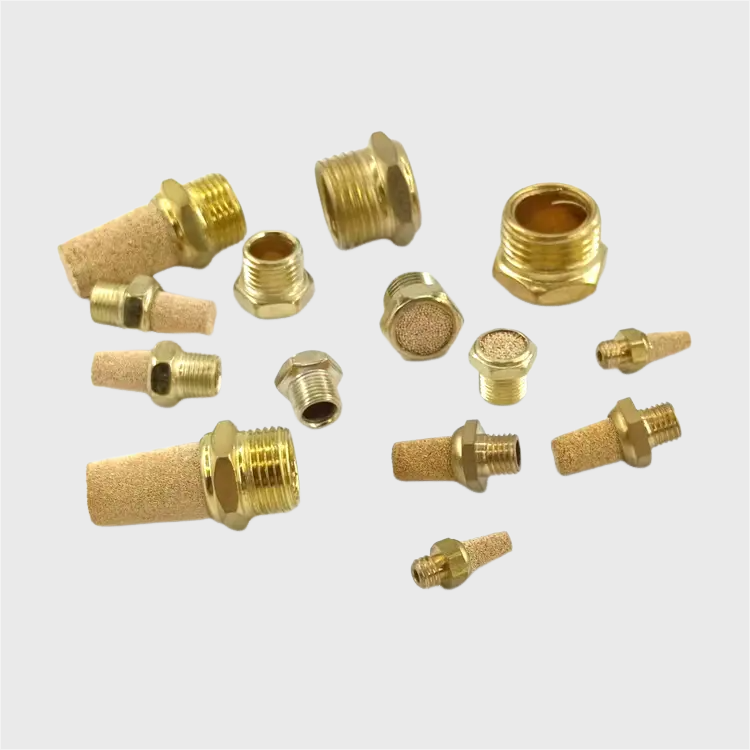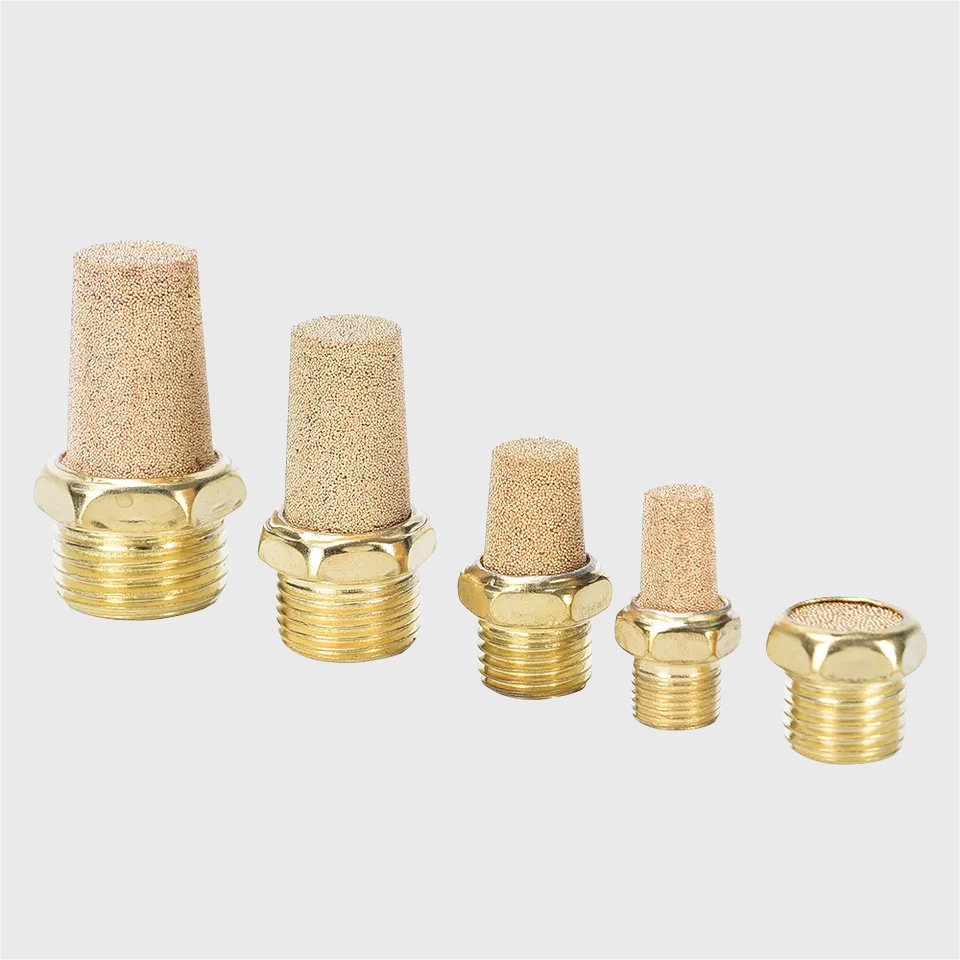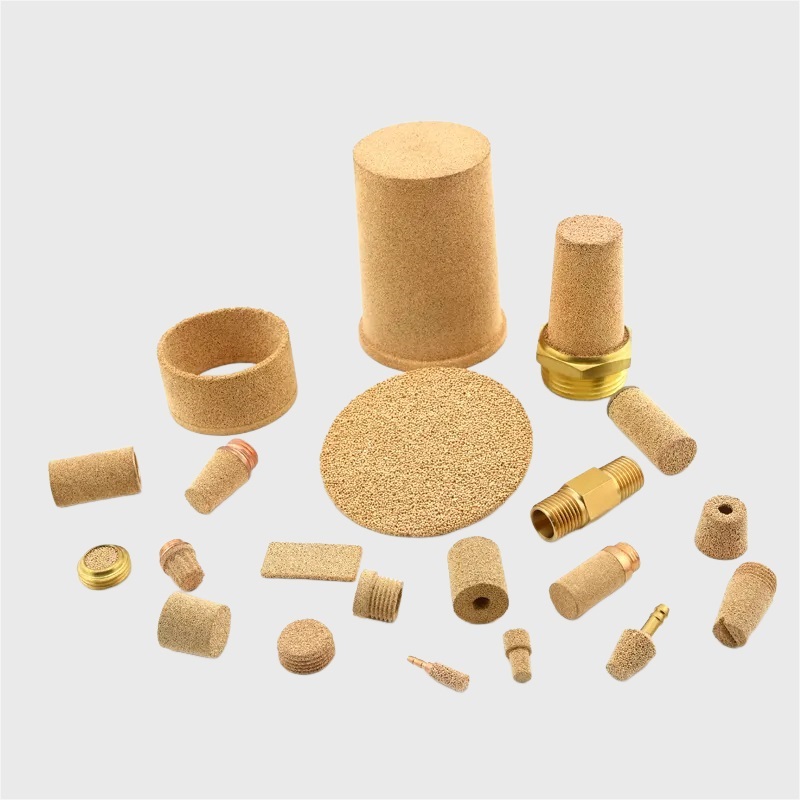Pneumatic Silencer
Saifilter Pneumatic Silencer, commonly referred to as an air muffler, is an essential component integrated into pneumatic systems. Its primary function is to dampen and reduce the noise levels and airflow disturbances produced by the rapid exhaust of compressed air. Interestingly, many of these silencers utilize a Sintered Bronze Filter as part of their construction to ensure optimal airflow control and noise reduction.
By doing so, it not only ensures a quieter operational environment, promoting workplace safety but also aids in preventing the potential dispersion of contaminants. Moreover, optimizing airflow dynamics contributes to the overall efficiency and longevity of the pneumatic system.


Wire Mesh Disc Specifications
| Material | Filter Rating | Porosity | Working Pressure | Operating Temperature | Shape | Coefficient of expansion | Density |
|---|---|---|---|---|---|---|---|
| Bronze Powder | 1um-200um | 35 - 45% | 0.2 - 0.8MPa | 5-60℃ | Round Disc | 17x10-6 | 1-6kg/mm2 |
| Product Name | Brass pneumatic silencer |
|---|---|
| Material | Brass |
| Type | Fittings |
| Max Operating Pressure | 0.8Mpa |
| Muffler Size | M5/5mm,1/8"/9.7mm, 1/4"/12mm, 3/8"/16mm,1/2"/20mm |
| Ambient Fluid Temperature | 5-60℃ |

Pneumatic Muffler Filter

Pneumatic Air Muffler
Features
- Noise Reduction: Its primary function is to decrease the noise levels generated by the rapid exhaust of compressed air from pneumatic systems.
- Enhanced Airflow Dynamics: The silencer design ensures a more streamlined airflow, reducing turbulence and ensuring smoother operations.
- Contaminant Prevention: Some silencers are designed to prevent the dispersion of oil mists and other contaminants into the atmosphere.
- Durable Construction: Often made from materials like stainless steel, brass, or sintered bronze, ensuring longevity and resistance to corrosion.
- Variety of Sizes: Available in various sizes to fit different pneumatic components and systems.
- Compact Design: Despite its essential function, many Pneumatic Silencers are compact, ensuring they don't add significant bulk to a system.
- Temperature Resistance: Can operate effectively across a range of temperatures, making them versatile for different environments.
- Easy Installation: Designed for simple integration into existing pneumatic systems, often requiring no additional tools.
- Protection of Pneumatic Components: By controlling the exhaust flow, silencers can reduce the wear on system components, extending their operational lifespan.
- Cost-effective: A relatively inexpensive component that can prevent potential costs related to noise complaints or damaged components.
Benefits
- Noise Reduction: They effectively diminish the noise produced by the rapid discharge of compressed air in pneumatic systems.
- Enhanced Working Environment: By lowering noise levels, silencers create a quieter, more comfortable working environment, reducing the risk of hearing impairments for workers.
- Extended Equipment Lifespan: Silencers can mitigate sudden air surges in the system, reducing wear on pneumatic components and extending their lifespan.
- Pollution Prevention: Some silencers are designed to prevent the emission of oil mists and other contaminants into the atmosphere, protecting the environment.
- Space-saving: Due to their compact design, Pneumatic Silencers don't add significant bulk to systems, facilitating installation and layout.
- Durability: Often made from materials such as stainless steel, brass, or sintered bronze, silencers offer high corrosion resistance and durability.
- Easy Installation: Most silencers have a straightforward design, making them easy to install without special tools.
- Cost-Effective: While relatively inexpensive components, they can prevent potential costs from noise complaints or damaged components.
- Versatility: Given their efficiency across various temperature ranges, Pneumatic Silencers perform well in diverse conditions.
- Boosted System Efficiency: By optimizing the aerodynamics of the airflow, silencers can enhance the overall efficiency of the pneumatic system.
Applications
- Compressor air source treatment components
- pneumatic tools
- Pneumatic valves
- Cylinders and actuators
- Medical equipment and automation systems
Relevant Products

Pneumatic Silencers are used to regulate the flow rate to achieve a lower resistance and thus have a minimal impact on the operation of your pneumatic system. Compressed air silencers from Festo are used in pneumatic exhaust air ducts to reduce the sound of air escaping from a pipe system.
Saifilter silencer, for example, is a body/sintered body that uses several chambers separated by baffles to slow down and cool down the escaping gases. This reduces the noise made by the escaping gases and reduces the likelihood of sparks. As silencers are manufactured using porous aluminum, the flow rate of silencers in pneumatics can be widely regulated; as a result, Festo silencers have lower resistance and a minimal impact on the operation of your pneumatic system.
Pneumatic Silencers are used to reduce noise when exhaust air is discharged. They cannot prevent the noise completely, but they can at least reduce it considerably. Festo silencers not only reduce the noise level but also prevent the speed and performance of your system from dropping. Festo silencers in pneumatics thus ensure smooth processes in industrial automation without unexpected downtimes.
Aside from ensuring compliance with noise regulations, using a silencer enhances the working environment, protects workers' hearing, and ensures the longevity and efficient operation of pneumatic equipment.




